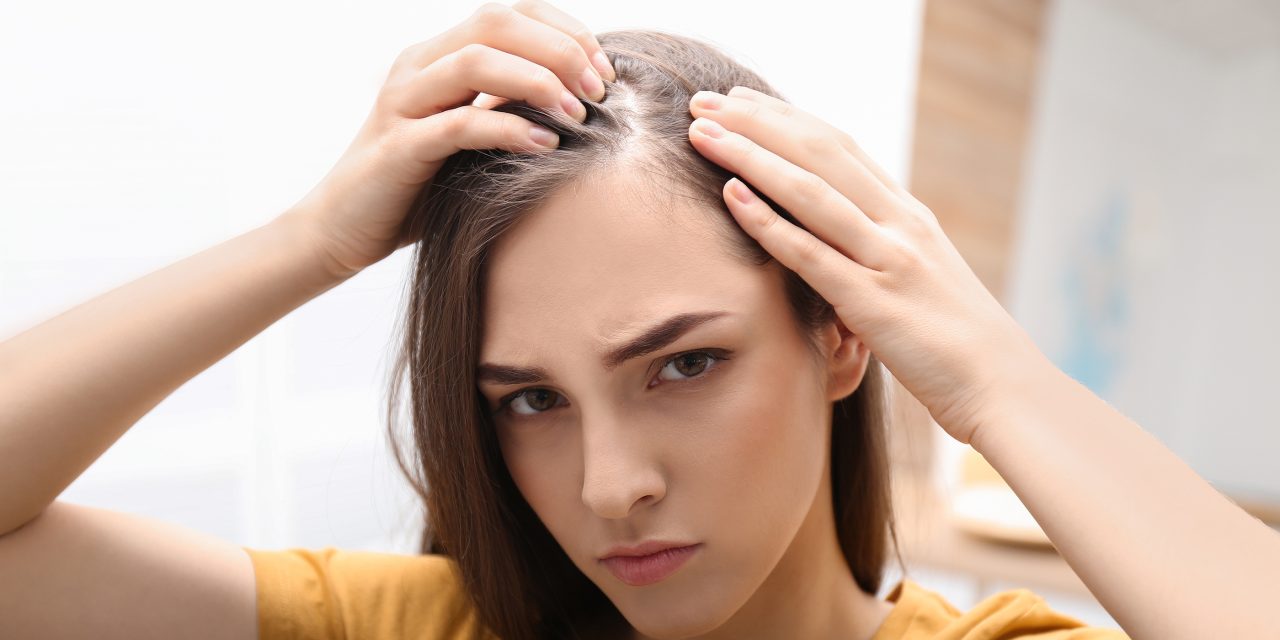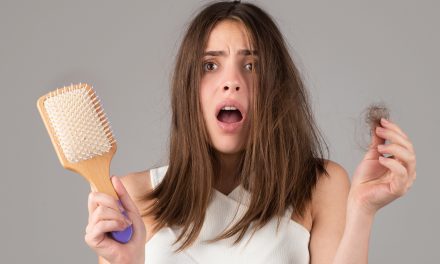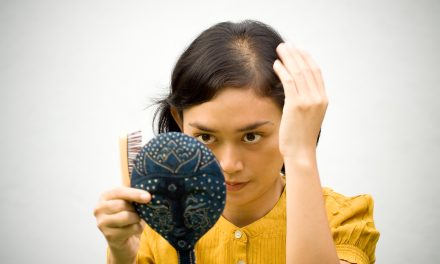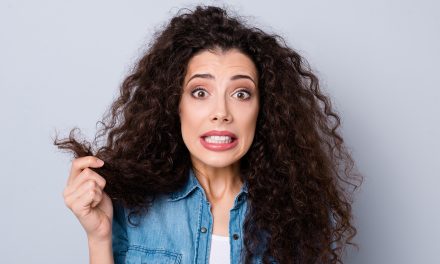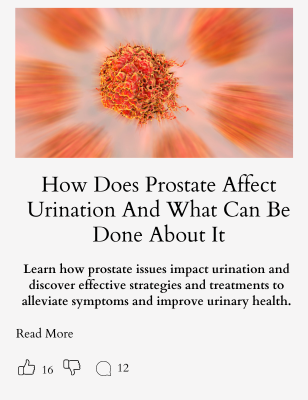Hair loss, a common concern affecting millions worldwide, can be distressing and impact a person’s overall well-being. Many factors contribute to hair loss, such as genetics, hormonal changes, medications, and certain medical conditions. Understanding the underlying cause of hair loss is crucial when exploring potential treatments and determining the likelihood of reversing it.
Various treatments and approaches exist to address hair loss, including non-surgical solutions like medications, advanced therapies, and lifestyle changes. Moreover, surgical options may be viable for some individuals, with transplant procedures often being the most effective means of restoring hair. It is important to consider each option, consult with professional medical advice, and assess personal factors to ensure appropriate and effective treatment.
Key Takeaways
- The article discusses the causes, symptoms, and diagnosis of hair loss, and how to determine if it can be reversed.
- Non-surgical treatments, advanced therapies, and surgical options are explored as potential ways to address hair loss.
- The role of nutrition, hair care, and mental well-being in maintaining hair health is also emphasized throughout the article.
Understanding Hair Loss
Causes of Hair Loss
There are several factors that can contribute to hair loss. Some of the common causes include genetics, hormonal changes, age, menopause, medical conditions, medication, stress, diet, and infections. It is essential to know the root cause to determine the appropriate approach for addressing your hair loss concerns effectively.
Genetics play a significant role in hair loss susceptibility for both men and women. Hormonal changes, particularly those related to menopause, can also impact your hair health. As you age, hair loss is a common phenomenon, and temporary or permanent hair loss may occur during this time.
Medical conditions like alopecia, thyroid issues, and autoimmune diseases can result in hair loss. Additionally, certain medications used to treat medical conditions such as cancer, arthritis, or heart problems may have hair loss as a side effect.
Stress has a direct link to temporary hair loss triggered by events like major surgery or emotional strain. Your diet plays a vital role in maintaining healthy hair, and nutritional deficiencies can lead to hair weakening and shedding. Lastly, infections targeting the scalp and hair follicles may contribute to hair loss.
Types of Hair Loss
Understanding the different types of hair loss can help in determining the proper course of treatment. Here are some common types:
- Alopecia Areata: This condition is an autoimmune disorder, which causes the immune system to mistakenly attack hair follicles leading to hair loss.
- Androgenetic Alopecia: Commonly known as male-pattern or female-pattern baldness, this type of hair loss is typically linked to genetics and hormonal changes.
- Telogen Effluvium: Temporary hair loss can occur due to factors like stress, medications, or hormonal changes. This type of hair loss involves increased shedding and thinning hair.
- Traction Alopecia: Hair loss caused by continuous tension or pulling on the hair, due to hairstyles like tight ponytails or braids.
- Tinea Capitis: A fungal infection that affects the scalp, leading to hair loss in patches.
Knowing the various causes and types of hair loss is essential in devising a personalized treatment plan. By addressing the root problem, it is possible to find an appropriate solution to reverse or manage hair loss.
Signs and Symptoms
Recognizing Hair Loss Patterns
There are several symptoms that may indicate hair loss. One of the most common signs is a receding hairline, which typically starts at the temples and progressively moves backward. This is particularly noticeable in male pattern baldness. Another common symptom is thinning hair. It can occur gradually and may not be as easy to spot, but thinning hair is often seen in female pattern hair loss. Moreover, patchy hair loss is a symptom where small patches of hair start to disappear from the scalp.
It’s important to pay attention to these patterns, as they can help determine the type and cause of hair loss. Here’s a quick summary of the common hair loss symptoms:
- Receding hairline
- Thinning hair
- Patchy hair loss
When to See a Doctor
While hair loss may be frustrating and concerning, it’s not always a cause for alarm. However, if you notice any of the following changes, it’s a good idea to consult with a healthcare professional:
- Rapid or sudden hair loss
- Painful or burning sensation on your scalp
- Presence of redness, swelling, or pus in the affected area
Understanding the signs and symptoms of hair loss is important for early detection and treatment. By recognizing the hair loss patterns, you can take timely action and consult with a doctor to determine the most suitable treatment options.
Footnotes
Diagnosis of Hair Loss
Medical History and Physical Exam
During a hair loss diagnosis, the doctor usually starts with a thorough medical history, including any family history of hair loss. They will ask questions about recent changes in your diet, health, and lifestyle, as this can help identify possible triggers or underlying medical conditions.
A physical exam includes a detailed examination of the scalp, assessing the pattern and extent of hair loss. In some cases, the dermatologist may also check the other body parts for hair loss or related skin conditions. It is essential to provide accurate information during this stage, as it helps the doctor determine the best course of action.
Dermatological Tests and Blood Work
In addition to medical history and physical examination, a dermatologist may perform some additional tests to identify the cause of hair loss. These tests may include:
- Scalp biopsy: The doctor scrapes samples from the skin or plucks a few hairs from the scalp to examine the hair roots under a microscope. This test can help determine whether an infection is causing hair loss. Source: Mayo Clinic
- Light microscopy: The doctor uses a special instrument to examine hairs trimmed at their bases, providing insights into hair health and growth patterns.
- Blood test: A blood test can help the doctor rule out any underlying medical conditions or imbalances that may be contributing to hair loss, like hormonal imbalances or nutritional deficiencies.
By combining the information from the medical history, physical examination, and these tests, the doctor will form a more accurate understanding of the hair loss’s cause. This helps them recommend an appropriate treatment plan, which may include medications, lifestyle changes, or even surgical options. It’s important to remember that each person’s hair loss journey is unique, and the path to reversing hair loss will differ for everyone.
Non-Surgical Treatments
Medications
There are a few medications available to help combat hair loss. One of the most popular options is minoxidil (Rogaine), an over-the-counter treatment that thickens hair follicles and promotes hair lengthening. Another effective medication is finasteride (Propecia), a prescription drug that works by blocking the production of dihydrotestosterone (DHT), a hormone responsible for shrinking hair follicles.
Topical Treatments
Topical treatments, such as minoxidil (Rogaine), can help many people regrow their hair or slow down the rate of hair loss. It usually takes at least six months of treatment to see results, but it may take a bit longer to determine if the treatment is effective for you. Minoxidil comes in the form of a liquid or foam that is applied directly to the scalp.
Lifestyle Changes and Natural Remedies
Making certain lifestyle changes and trying natural remedies can also aid in reversing hair loss. For example, a Mediterranean diet rich in fruits, vegetables, whole grains, and healthy fats has been associated with reduced hair loss. Incorporating specific vitamins and minerals into your diet, like biotin, zinc, and iron, can improve the health of your hair.
Another natural remedy that people often turn to is saw palmetto, an herbal supplement thought to block DHT production, just like finasteride. However, the efficacy of saw palmetto in treating hair loss has not been well-established by scientific research.
In conclusion, non-surgical interventions ranging from medications and topical treatments to lifestyle changes and natural remedies can help with hair loss management. It’s essential to discuss these options with a healthcare professional to determine the best course of action for your specific situation.
Advanced Therapies
Laser Treatment
Laser therapy utilizes specific wavelengths of light to stimulate hair growth by targeting hair follicles. One popular option is the Low-Level Laser Therapy (LLLT) technique, which is known for being non-invasive and safe. LLLT works by activating the cells in the hair follicles and enhancing blood flow, leading to healthier hair growth.
There are various laser treatment devices available, such as laser combs, laser caps, and helmets. These devices typically need to be used consistently over a few months for noticeable results. However, it’s important to note that laser therapy may not work for everyone and is generally more effective in cases of early-stage hair loss.
Platelet-Rich Plasma
Another advanced therapy option is Platelet-Rich Plasma (PRP) treatment. PRP harnesses the growth factors present in your own blood platelets to promote hair growth. The process involves extracting a small amount of blood, concentrating the platelets through a centrifuge, and then injecting the PRP directly into the scalp.
PRP has gained popularity due to its potential in boosting hair growth, especially in patients with androgenetic alopecia. Some studies have demonstrated a significant increase in hair density after PRP treatments. Nevertheless, the results may vary based on the individual, and it is recommended to consult with a medical professional to determine if PRP is suitable for your specific hair loss condition.
In conclusion, while both laser treatment and PRP come with their respective benefits, it’s essential to remember that every individual’s hair loss situation is different. Consulting a specialist in advanced therapies can help you determine the most suitable option for your specific case.
Surgical Options
Hair Transplantation
Hair transplant surgery is one of the most popular and effective surgical methods for reversing hair loss. In this procedure, a doctor takes healthy hair follicles from a donor area, typically at the back of the head, and transplants them to the area where hair is thinning.
There are two primary techniques used for hair transplantation:
- Follicular Unit Transplantation (FUT) – In this method, a strip of skin with hair is removed from the donor area, and the hair follicles are separated before being implanted.
- Follicular Unit Extraction (FUE) – This technique involves the removal of individual hair follicles from the donor area, which are then implanted individually in the recipient area.
Both methods have their advantages and disadvantages. FUT typically requires a smaller recovery time and produces a thinner linear scar, whereas FUE eliminates the linear scar but may require multiple sessions to achieve the desired results.
Scalp Reduction
Scalp reduction is another surgical option for hair loss reversal. This procedure involves the removal of the bald area of the scalp and the stretching of the remaining skin to cover the previously bald area. Scalp reduction can be performed alone or in combination with a hair transplant surgery.
It is essential to consult with a specialist to determine the most suitable surgical option for your specific situation. A qualified doctor can assess your hair loss pattern and discuss the advantages and disadvantages of each technique, helping you make an informed decision about the best approach to reverse your hair loss.
Hair Care and Maintenance
Proper hair care and maintenance are crucial to prevent hair loss and improve hair health. In this section, we will discuss gentle handling of hair and appropriate hairstyling practices that help minimize hair damage.
Gentle Handling
Regular hair treatments can potentially lead to hair loss. Chemical processes like hair dye and bleaching can weaken hair strands, making them prone to breakage. One should also be cautious while using heated styling tools, as excessive heat might cause hair damage. It is important to use a heat protectant spray before subjecting your hair to heat styling.
When it comes to washing and brushing, use a gentle touch. Avoid aggressive brushing and combing, as these actions can cause mechanical hair damage and, in extreme cases, lead to telogen effluvium. Make sure to use a mild shampoo and a wide-toothed comb to detangle your hair to prevent breakage.
Appropriate Hairstyling
A crucial aspect of hair care is choosing appropriate hairstyles. Some hairstyles, like tight ponytails, braids, or buns can cause traction alopecia, a form of hair loss caused by constant pulling on hair. To prevent traction alopecia, opt for loose hairstyles that don’t create tension in the hair shafts. In case you notice hair thinning around your temples or hairline, it’s important to change your styling habits immediately.
It is also essential to be aware of the accessories you use while styling your hair. Avoid using thin and tight hair bands, clips, or clasps that can cause hair breakage. Instead, opt for gentle hair ties made of smooth and soft materials.
In summary, hair care and maintenance practices play a significant role in preventing hair loss and promoting healthy hair growth. By incorporating gentle handling and appropriate hairstyling methods into your routine, you can minimize hair damage and maintain a healthy head of hair.
Mental and Emotional Considerations
Coping with Hair Loss
Hair loss can have a significant psychological impact on an individual, affecting their self-esteem and mental health. It is essential to understand and address the emotional challenges that come with hair loss.
One effective way to cope with hair loss is to maintain a healthy lifestyle, which includes regular exercise, a balanced diet, and adequate sleep. This can help reduce stress and improve overall well-being, which in turn may have a positive effect on hair health. Additionally, engaging in relaxation techniques such as meditation or yoga can help alleviate stress.
It’s important to remember that hair loss is a common experience, affecting many people. Connecting with others who share similar experiences, either in-person or through support groups, can provide valuable empathy and understanding.
Support and Counseling
For those struggling emotionally with hair loss, seeking professional help from a therapist or counselor can provide an avenue for understanding and addressing the underlying feelings of stress and depression that may accompany this condition. These professionals can guide individuals in developing healthy coping mechanisms and provide a safe space to discuss their concerns.
Furthermore, considering the possible link between stress and hair loss, addressing psychological factors may also prove beneficial in the journey to reverse or manage hair loss. Early intervention and ongoing support can be crucial in maintaining mental and emotional well-being throughout this process.
In summary, addressing the mental and emotional considerations associated with hair loss is a vital aspect of coping and potentially reversing the condition. Through healthy lifestyle choices, connecting with others who share similar experiences, and seeking professional support, individuals can better navigate the complexities of hair loss with confidence and resilience.
Nutrition’s Role in Hair Health
Dietary Adjustments
A well-balanced diet plays a crucial role in maintaining healthy hair. Including a variety of vitamins, minerals, proteins, and other nutrients in your diet can significantly improve hair health and even prevent hair loss. Selenium, for example, is an essential trace mineral that supports hair growth and can be found in foods such as Brazil nuts, fish, and whole grains source.
It is essential to consume adequate protein, as a deficiency in this macronutrient can lead to hair loss source. Excellent sources of protein include lean meats, fish, poultry, eggs, dairy products, and plant-based options like beans, lentils, and tofu.
In addition, incorporating foods rich in vitamins and minerals, such as fruits, vegetables, and whole grains, can significantly improve hair health. For instance:
- Vitamin A can be found in carrots, sweet potatoes, and spinach.
- Vitamin C is abundant in oranges, kiwi, strawberries, and bell peppers.
- Vitamin E can be sourced from almonds, avocado, and sunflower seeds.
Supplements
While obtaining nutrients through whole foods is the ideal approach, supplements can also play a role in promoting hair health. It is important to note that one should consult with a healthcare professional before starting any new supplement regimen, as excessive intakes can cause adverse effects source.
Some popular supplements used to support hair health include the following:
- Biotin: Although large-scale studies have not yet provided strong evidence for the benefits of biotin supplementation in hair growth, some case reports have shown its potential source.
- Iron: Especially for individuals with anemia or iron deficiency, taking iron supplements can help address hair loss source.
- Minoxidil (Rogaine): This FDA-approved hair loss treatment is available over the counter and has been shown to thicken hair follicles and promote hair growth in both men and women source.
Remember, dietary adjustments and supplements should be part of an overall strategy to address hair health and hair loss. It is vital to consult with a healthcare professional to identify the underlying causes and choose the best course of action.
Research and Emerging Treatments
Stem Cell Research
Stem cell research has shown promising potential for treating hair loss. Scientists have been working with dermal papilla cells, which are essential for hair follicle growth, to develop treatments that can promote hair regrowth. A particular focus has been given to the role of stress hormones in inhibiting the dermal papilla from producing a molecular signal called Gas6, which activates hair follicle stem cells. By better understanding this mechanism, researchers hope to develop treatments that reverse the negative effects of stress hormones on hair growth.
Innovative Hair Loss Solutions
Several innovative hair loss solutions have been developed or are currently under investigation, such as:
- Minoxidil: An over-the-counter treatment approved by the FDA, minoxidil has been shown to help thicken hair follicles and promote hair lengthening. It is available as a liquid or foam that is applied to the scalp.
- HairClone: A treatment currently being developed, HairClone aims to reverse the miniaturization process by allowing people to bank youthful follicles or follicles from areas of the head that still have hair. In the future, these banked follicles could be reintroduced to reverse hair loss.
- Baricitinib: A new drug tested at UCI Health and approved by the FDA, baricitinib has demonstrated the potential to restore some or all of the hair lost due to alopecia areata, an autoimmune disorder that affects millions of Americans.
As research continues to advance our understanding of hair loss and available treatment options, those facing hair loss may find hope in these emerging therapies. With ongoing clinical trials and innovative solutions being developed, it is important to stay informed and consult medical professionals to determine the best course of action for individual cases.
Frequently Asked Questions
What are effective methods to stop hair fall immediately?
To stop hair fall immediately, some effective methods include using a gentle shampoo and conditioner, avoiding tight hairstyles, and reducing heat and chemical styling. Eating a balanced, nutrient-rich diet, and managing stress levels can also help in minimizing hair loss. A visit to a dermatologist for personalized advice is recommended. You can learn more about hair loss prevention from Healthline.
Can thinning hair in females be restored to its original thickness?
Thinning hair in females can sometimes be restored to its original thickness depending on the cause of the hair loss. Hormonal changes, nutritional deficiencies, and certain medical conditions can lead to temporary hair loss, which may be reversible with proper treatment. A dermatologist can help diagnose and provide appropriate treatments. The Cleveland Clinic offers guidance on hair loss in women.
What natural remedies contribute to regrowing hair within weeks?
Some natural remedies, such as massaging the scalp with essential oils and consuming a diet rich in vitamins and minerals, may contribute to hair regrowth. Other remedies include applying an onion juice or aloe vera gel to the scalp. However, the efficacy of these treatments may vary, and it is best to consult a dermatologist for personalized advice. Healthline provides further suggestions on hair loss prevention.
Is it scientifically possible to regrow lost hair?
Regrowing lost hair is scientifically possible in some cases. Treatments like minoxidil, finasteride, and laser therapy have been proven to encourage hair regrowth in certain types of hair loss, such as androgenetic alopecia. However, individual results may vary, and not all forms of hair loss are reversible. Further information can be found at the Mayo Clinic.
What is the best hair loss treatment currently available for women?
The best hair loss treatment for women depends on the cause and extent of the hair loss. Minoxidil (Rogaine) is the only FDA-approved medication for female pattern hair loss, and it has been shown to slow down hair loss and promote regrowth in some cases. Other treatments like laser therapy, PRP, or supplements may also help. It is important to consult a dermatologist for personalized advice. The Cleveland Clinic provides more information on hair loss treatments for women.
Over what timeframe can one typically expect to see results from hair loss reversal treatments?
The timeframe for seeing results from hair loss reversal treatments may vary depending on the cause of hair loss and the treatment method used. For example, minoxidil users can expect to see visible results within three to six months of consistent use. Other treatments like laser therapy or PRP may have different timeframes for results. It is essential to have realistic expectations and to follow the treatment advice provided by a dermatologist. The Mayo Clinic offers more insight into the timeframe and results of hair loss treatments.

